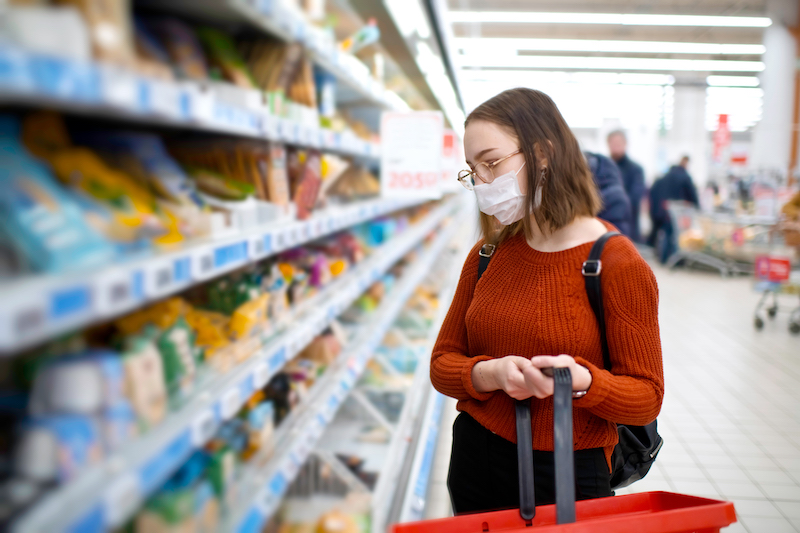
On April 9, Gov. Gretchen Whitmer amended the Stay Home, Stay Safe order in an attempt to stop the spread of the coronavirus — this time, expounding further mandates for essential business owners. Now in effect until April 30, the order offers clear guidelines to grocery retailers, and urges shoppers to comply with regulations that will help to “protect the health and safety of our state and each other.” We’re outlining the directives of Gov. Whitmer’s latest order, plus a few of our own tips to help you navigate your next grocery shopping trip.
Takeout’s still in service
Under the amended order, it is acceptable to leave your home to purchase groceries and takeout food for yourself, family, or household members. You are, however, urged to limit the number of people in your household who leave for food pickups. We say, put one person on food-duty per week and alternate. We recommend the designated food-buyer stock up on enough groceries to last at least one week, and try to make takeout or delivery pick-ups contactless.
Employees are limited
The number of grocery store workers have been restricted to no more than what is necessary to serve critical infrastructure functions or minimum basic operations. This means you may notice a limited amount of those manning registers, baggers, and stockists. Be prepared to wait in longer lines than usual, and perhaps, to be relegated to self-checkout kiosks at some retailers. You should plan to wear latex gloves whenever heading to the grocery store, but especially if you plan to pay at touch-screen kiosks.
Six feet’s the sweet spot
Workers and shoppers are tasked with keeping at least six feet apart whenever possible. To help in this effort, the order calls essential businesses to establish lines regulated with markings for shoppers, allowing them to stand at least six feet apart from one another while waiting. Stores are also encouraged to explore alternatives to lines, including curbside service. And while signage indicating appropriate distancing is mainly outdoors and at registers, use your best judgement to keep your distance throughout the aisles, too. If more than five shoppers are perusing an aisle, head to another area until the crowd disperses.
Those with special needs can enjoy specialty hours
Stores are tasked with designating at least two hours per week of dedicated shopping time for vulnerable populations, including those over age 60, pregnant women, and individuals with chronic conditions such as heart disease, diabetes, and lung disease. Seniors and those with disabilities are also encouraged to visit shopping centers with curbside pick-up. Whenever possible, we say send a loved one without such limitations.
Smaller grocery shopping centers call for smaller groups of shoppers
Stores of less than 50,000 square feet of customer floor space are now required to limit the number of people in the store — this includes workers — to 25% of the total occupancy limits. Stores with more than 50,000 square feet are called to limit the number of customers — not workers — to four people for every 1,000 square feet of customer floor space. This means you may have to wait outside until being granted access to your grocery store while shoppers wrap up their purchases. If the store does not have signage indicating your distance apart from the shopper in front of you, we suggest sitting in your car and waiting it out until the line dwindles. And always take advantage of disinfectant wipes and cleaning supplies to wipe down carts and other items while shopping — many grocers are offering them upon entrance.
Essentials only
If you notice the garden or nursery center in your grocery store is looking bare, that’s because the amended order mandates that stores close areas with goods such as plants. In the meantime, use your green thumb to nurture plant life you may already have at home, giving them plenty of light and water as needed.
|
| Ěý |
|










